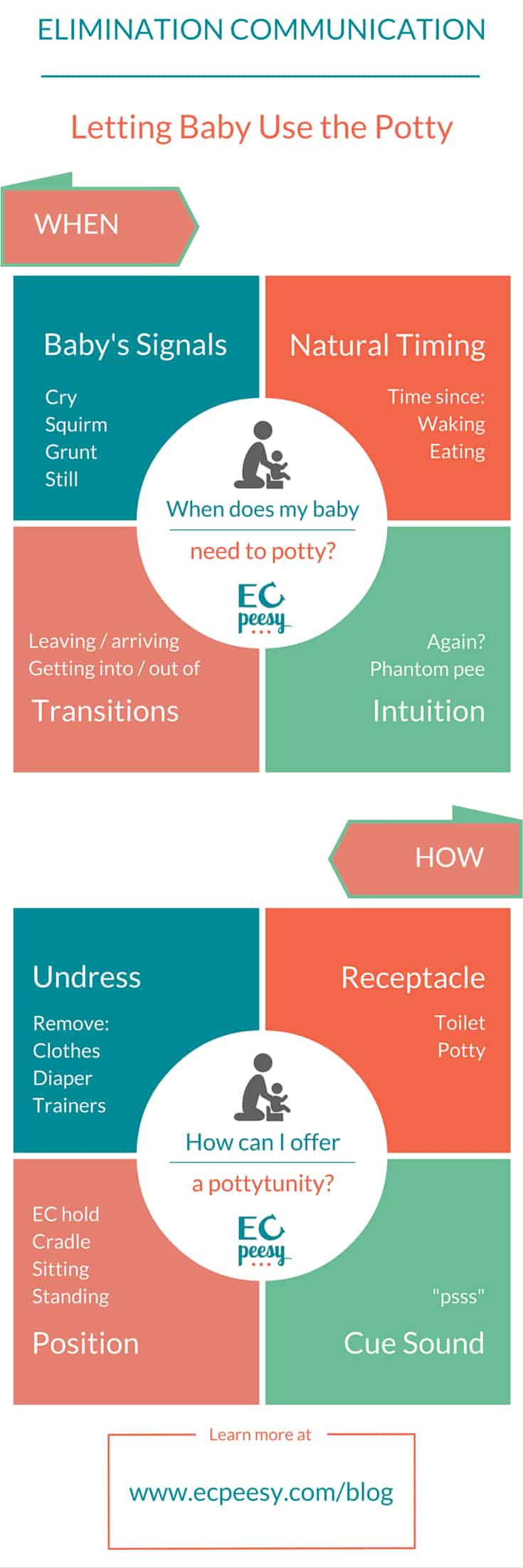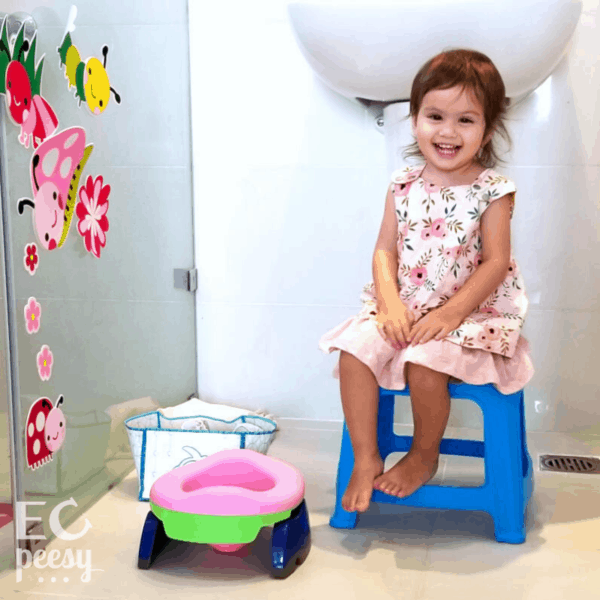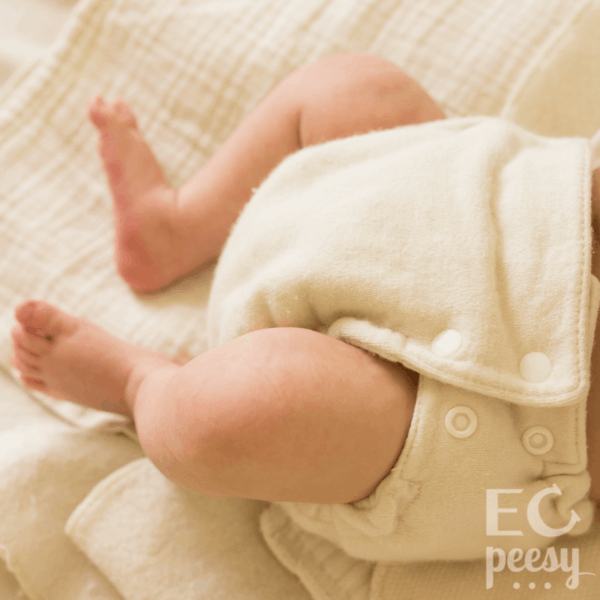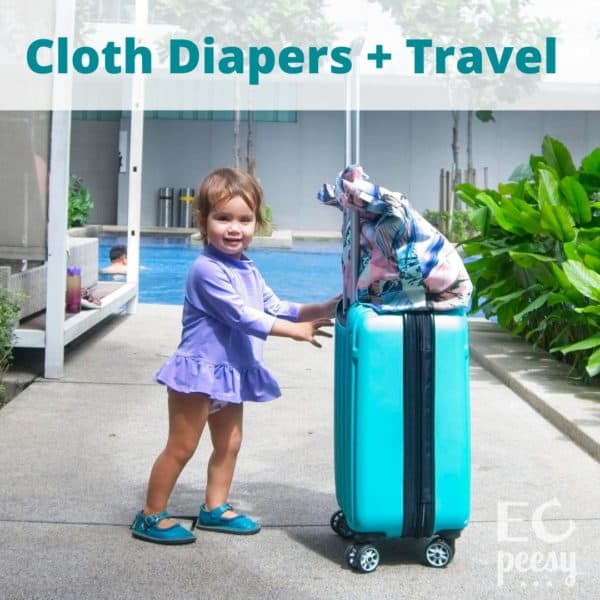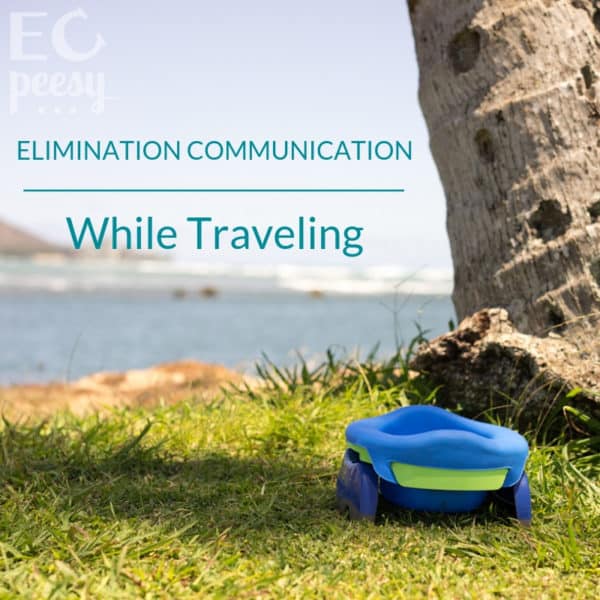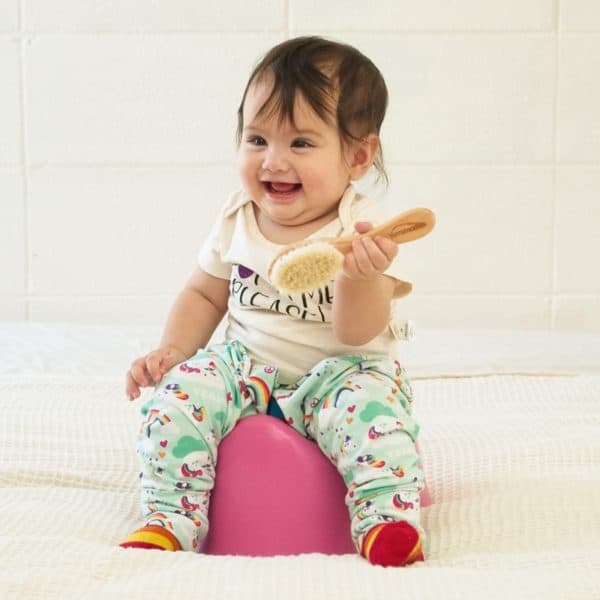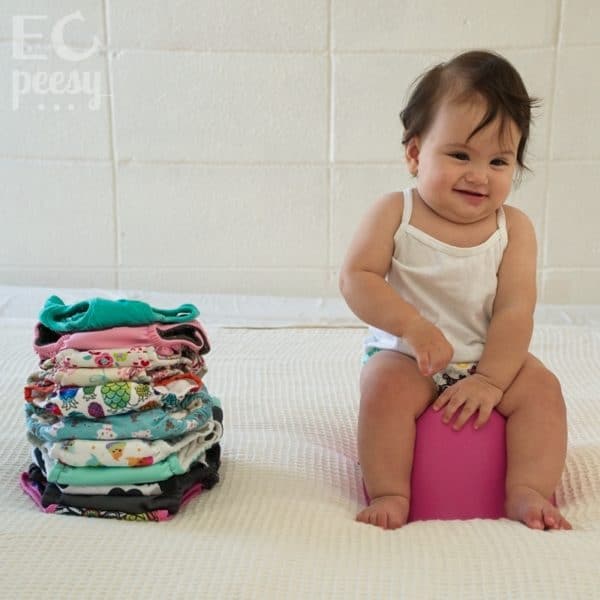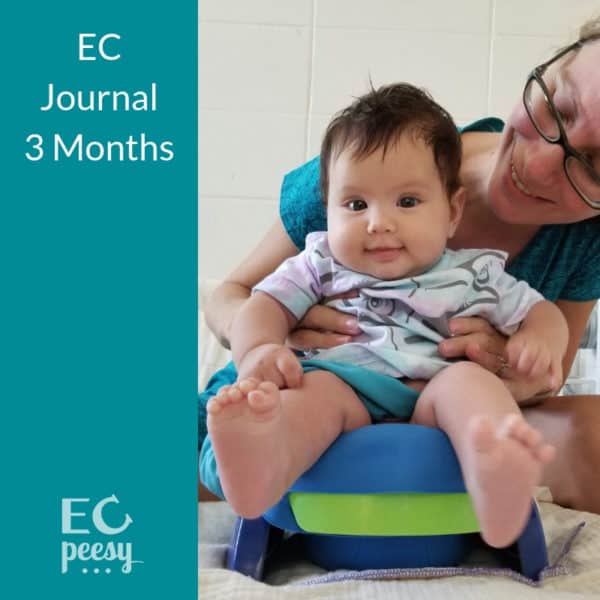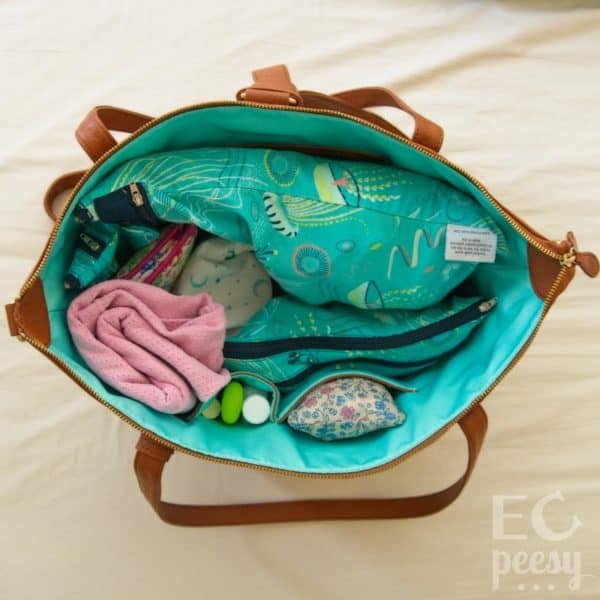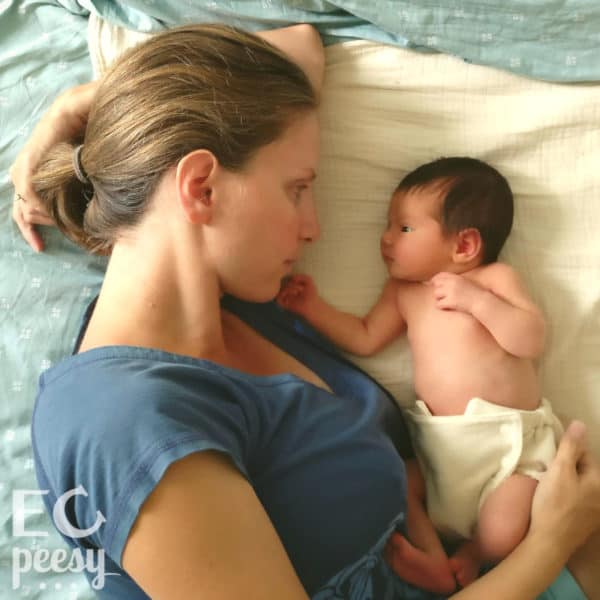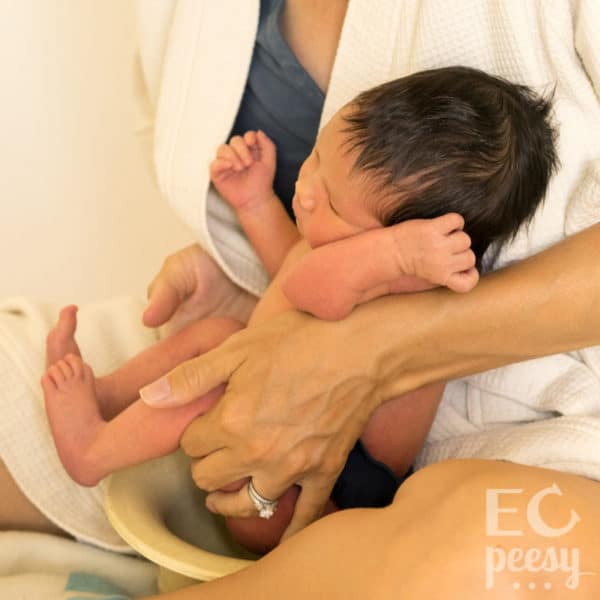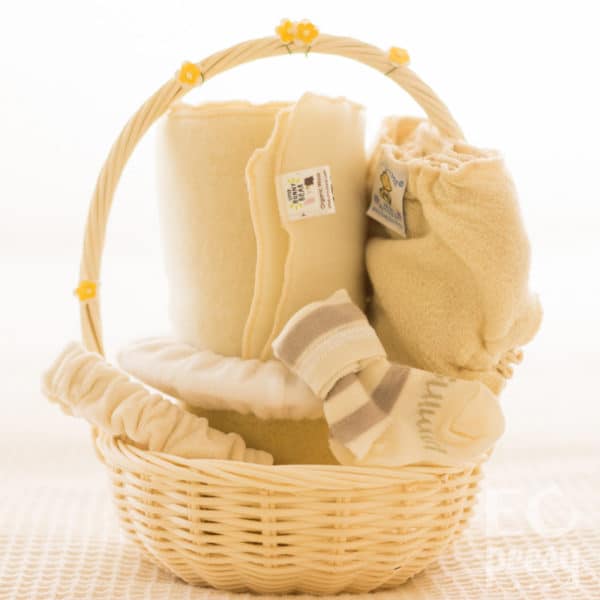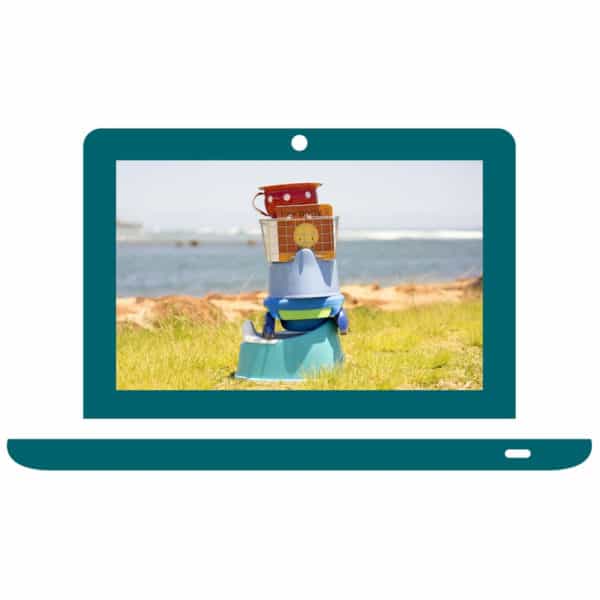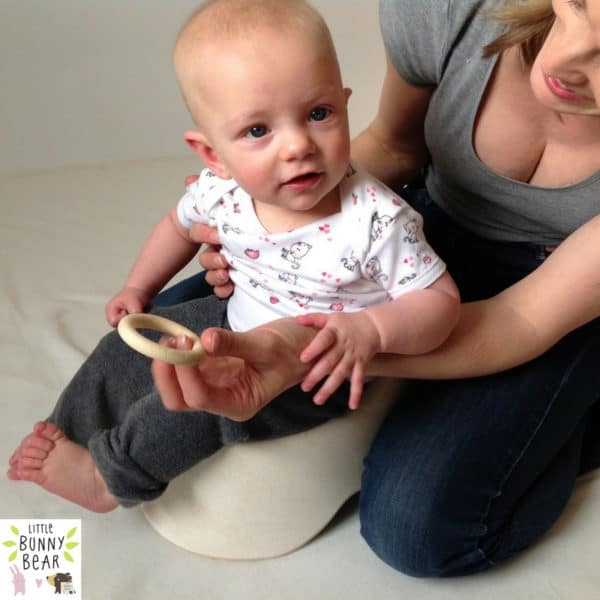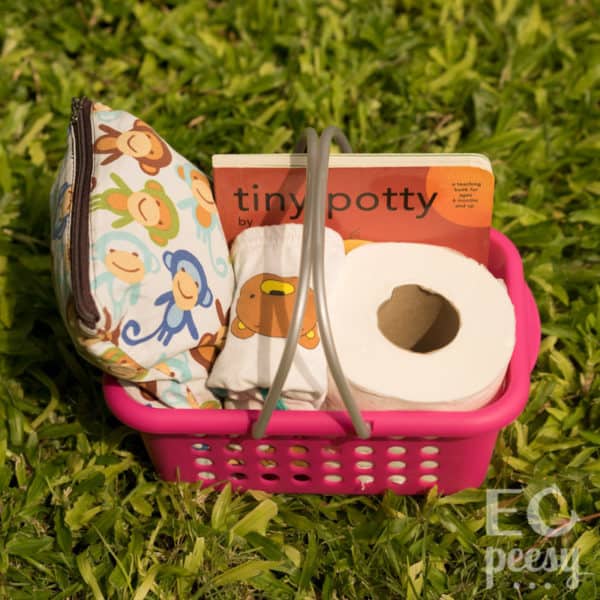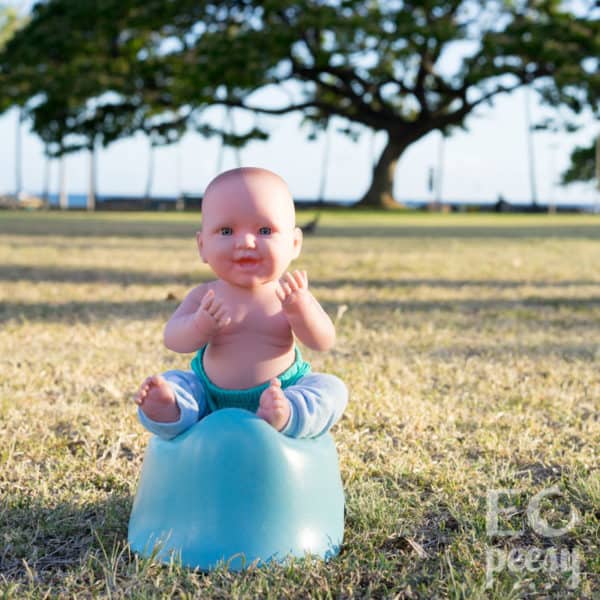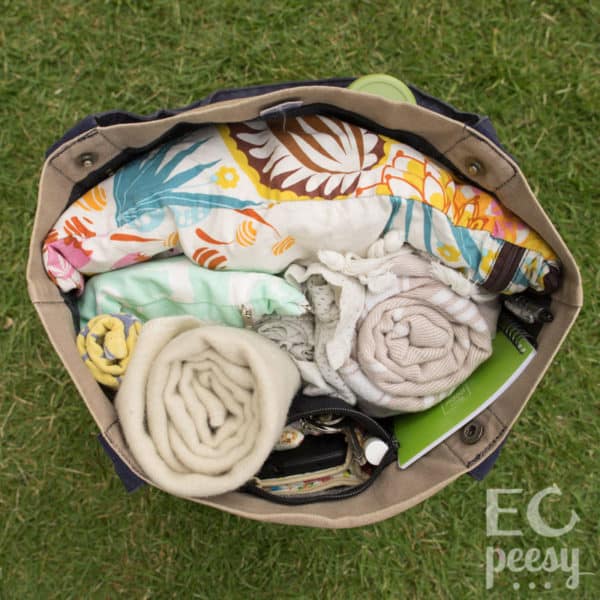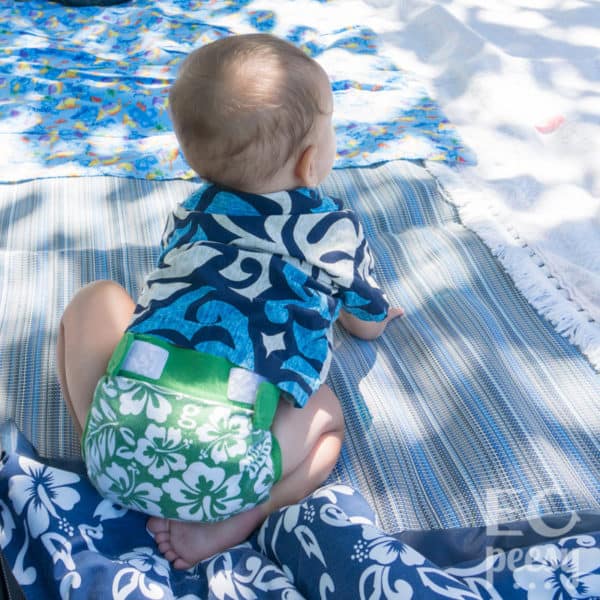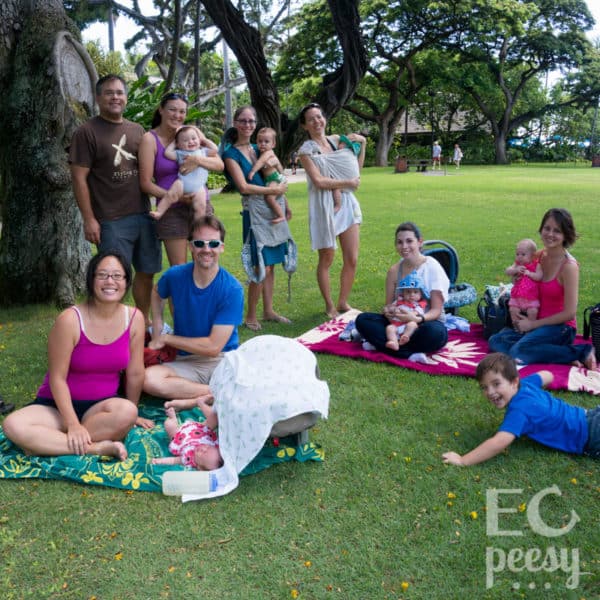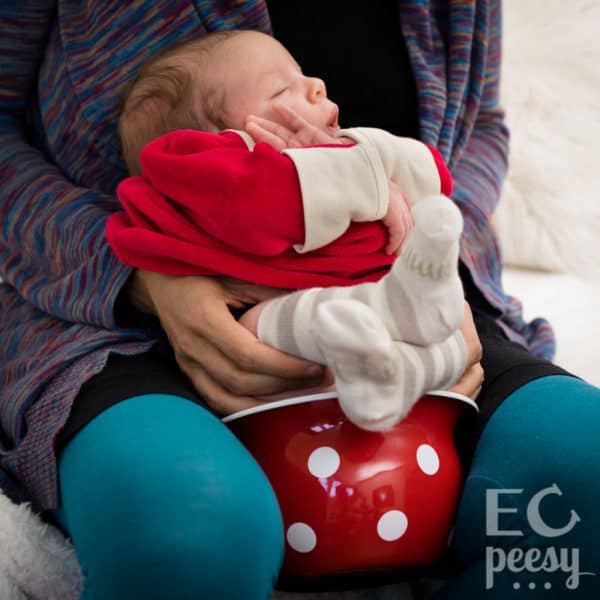Starting Elimination Communication – How to Potty
How to Start Elimination Communication Part 2:
How to potty.
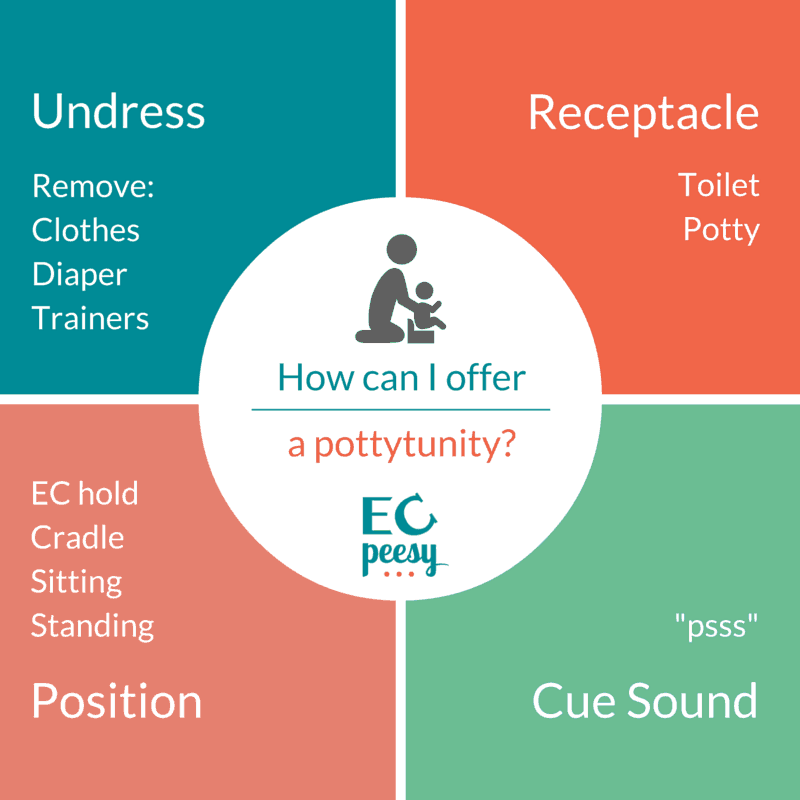
In Part 1 of How to Start Elimination Communication we explored when to offer your baby a chance to use the potty. Now let's look at Part 2 of How to Start Elimination Communication- how to offer your baby a chance to use the potty, also known as a "pottytunity".
It's up to you whether to do elimination communication part time or full time.
You can choose to do elimination communication (EC) only at home or also while out and about. You may want to do EC only during the day or also at night. You may practice EC every day of the week, or only on weekends. It's up to you how often you offer the potty based upon signals, natural timing, transitions, and intuition.
If you are starting EC with a young baby, you can wait to start offering the potty until after you have done 2-4 hours of diaper-free observation time to watch for signals and figure out natural timing. If you are starting EC with a toddler, you may want to start offering the potty during your 1-2 days of diaper-free observation time.
How to Offer a Pottytunity
Go to the Bathroom or Potty Area
When you notice that it is time to potty your baby, head to the bathroom or potty area. For a young baby, you may want to set up an area in your house with a potty and diaper changing station. Once your baby is standing up on his own, its a good time to do all pottying and diaper changes in the bathroom.
With a toddler, you can lead him by the hand to the bathroom, so he learns how to walk to the bathroom.
Undress Baby
Remove any of your baby's clothes that are in the way, such as pants. You will soon find that certain types of clothing are inconvenient to continually remove for frequent pottytunities. EC friendly clothing options include shirts or dresses instead of bodysuits; long socks instead of pants or tights; and sleep gowns instead of footed pajamas.
When undressing a young baby at home, you can lay her down on a changing pad on the floor to remove any pants and her diaper. Remember, most of us who are practicing elimination communication in Western cultures are not actually raising babies without diapers, but rather, are using diapers as back-up in case of a miss. When using the public restroom, I would take my baby into the bathroom stall, hold him with one arm, and remove his cloth diaper with the other hand.
For a toddler, you can have her stand up in the bathroom and help push down her pants and training pants or underwear. It may help to install a bar in your bathroom for your toddler to hold onto during standing diaper changes. The Montessori method also suggests keeping a small chair in the bathroom, for your toddler to sit on while undressing and dressing.
As you are undressing your child, check whether the back-up (diaper or cloth training pants) is wet. If it is wet, you can acknowledge the miss by saying, "You peed in your diaper. Pee goes in the potty. Let's see if you have some more pee to put in the potty."
Position
There are various positions that can be used while offering your baby a pottytunity. Here are some of the most common EC positions:
Classic EC Hold
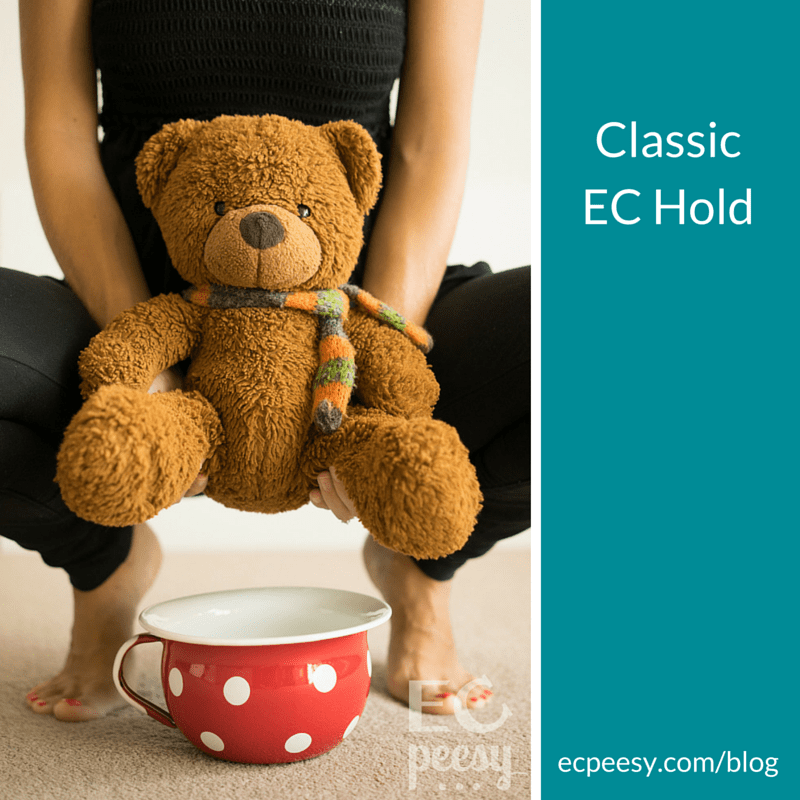
For a young or lightweight baby, the classic "EC hold" works well for holding the baby over a toilet. With the EC hold, the baby's back is placed securely against the caregiver's stomach. Each of the caregiver's hands rests under one of the baby's thighs, near the bend of the knees. This puts the baby's legs in an "M" position, with bottom hanging down. Depending upon what receptacle you are aiming for, you can either bend your knees slightly or squat down all the way. There is something magical about the EC hold, that helps Baby empty his bladder!
Cradle EC Hold
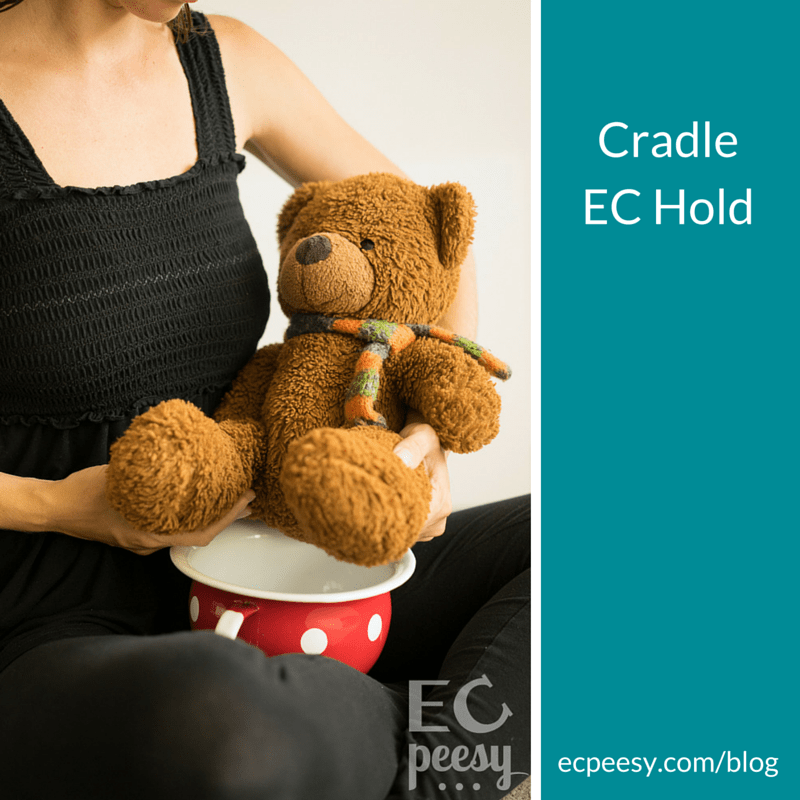
The cradle hold is an adapted version of the EC hold. The caregiver places one hand under each of the baby's thighs, while holding the baby in a cradle position over a chamber pot or top hat potty, which rests in the caregiver's lap. This works especially well with newborns with wobbly heads or for pottying while nursing. With a boy, make sure to tilt the front of the potty up, or aim the pee stream down.
Sitting, Squatting, Standing

Older babies and toddlers may use a sitting, squatting, or standing position while eliminating.
Aim for Receptacle
The toilet or a small potty are the most common receptacles for catching pee and poo, but you can use your imagination and improvise!
Disclosure: This post contains affiliate links. If you click on an affiliate link and make a purchase, I will earn a small commission, at no extra cost to you. Thanks for your support!
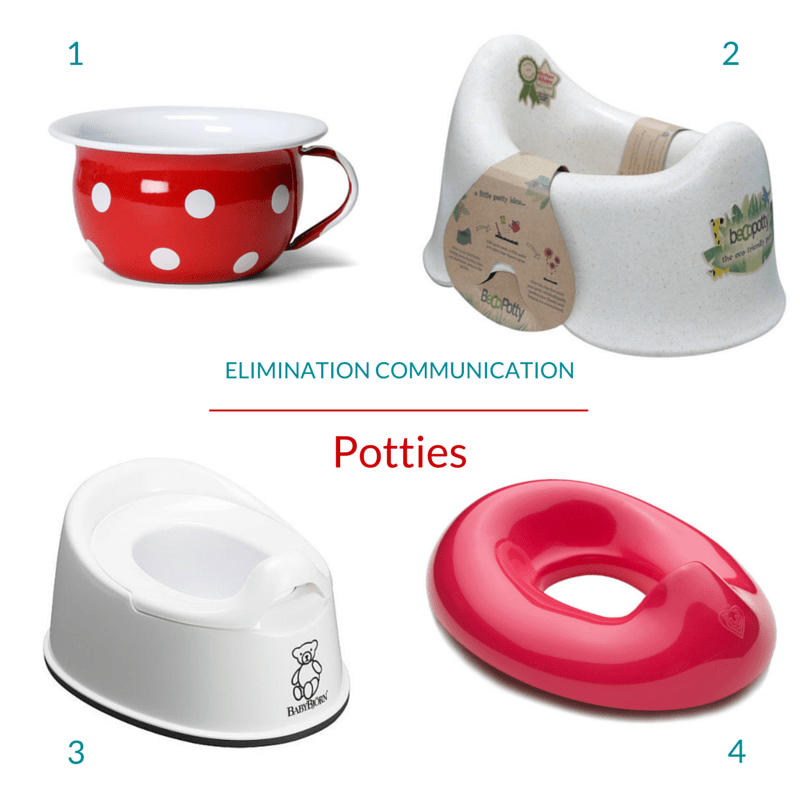
Elimination Communication Potties Shown Above:
- Chamber Pot
- BecoThings BecoPotty
- BabyBjorn Smart Potty
- Prince Lionheart weePOD Basix
Please see my post on the Best Elimination Communication Potties for an updated list.
For a newborn baby, it works well to place a top hat potty; classic chamber pot; or the the insert from a BabyBjorn Smart Potty between your legs and hold your baby over it in a cradle position (as shown above).
For babies who are sitting-up unassisted, a small potty or a toilet seat reducer (with constant supervision) are options.
For toddlers, a small potty on the floor or toilet seat reducer with a tall step stool can help promote potty independence.
You could also allow a very young baby to eliminate in the sink or a toddler to stand and pee in the shower.
Which receptacle you use to catch your baby's elimination is really up to you and the standards of what is considered acceptable in your culture.
Make a Cue Sound
You can make a cue sound to let your baby know it is time to eliminate. Once your baby is bare bottomed and positioned over the receptacle, make the cue sound one time. As soon as your baby starts to eliminate, make the cue sound one more time.
Common cue sounds are "psss" for pee and a grunt for poo. In Hawai'i, the word "shi-shi" is used for pee, and has a similar watery sound. In Vietnam, a whistling sound is used. When choosing a cue sound, avoid sounds that are commonly used in other contexts, such as "shhh" for quiet. You don't want to accidentally cue your baby at the wrong time! It's up to you which cue sound to use, just be consistent.
With a toddler instead of using only a cue sound, you can also model sign language (shaking "t" for "toilet"); a word ("potty!"); or phrase you would like the child to say ("time to potty!").
Wait patiently while your little one eliminates. It can take a while, especially for poo, which often takes a few pushes. When it looks like he is finished, you can ask, "All done?" or sign "finished" and wait a little bit longer.
Arching back or straightening legs is a signal that he is done, or that he doesn't need to eliminate at this time.
When your baby is finished, you can comment, "You peed in the potty." or " Yay! You went poop in the toilet.", but it is unnecessary to overly praise.
Clean Up
Clean up baby and the potty. An older baby can help wipe herself (pat, pat dry). A toddler can help dump the potty into the toilet; flush; and wash her hands. Even when my son was a baby, I would have him wash his hands after using the potty, to get accustomed to the routine.
You can rinse pee out of the potty with water and wash a poopy potty with soap and water and wipe it dry.
Dress Baby
A young baby can lay on the changing pad while you dress him. A toddler can sit on a chair while putting on cloth training pants and pulling them up. Allow your baby to be as involved in the dressing process as he can be based upon his current capabilities.
That wraps up How to Start Elimination Communication Part 2: How to Potty. Next we will share the ways in which elimination communication works.
